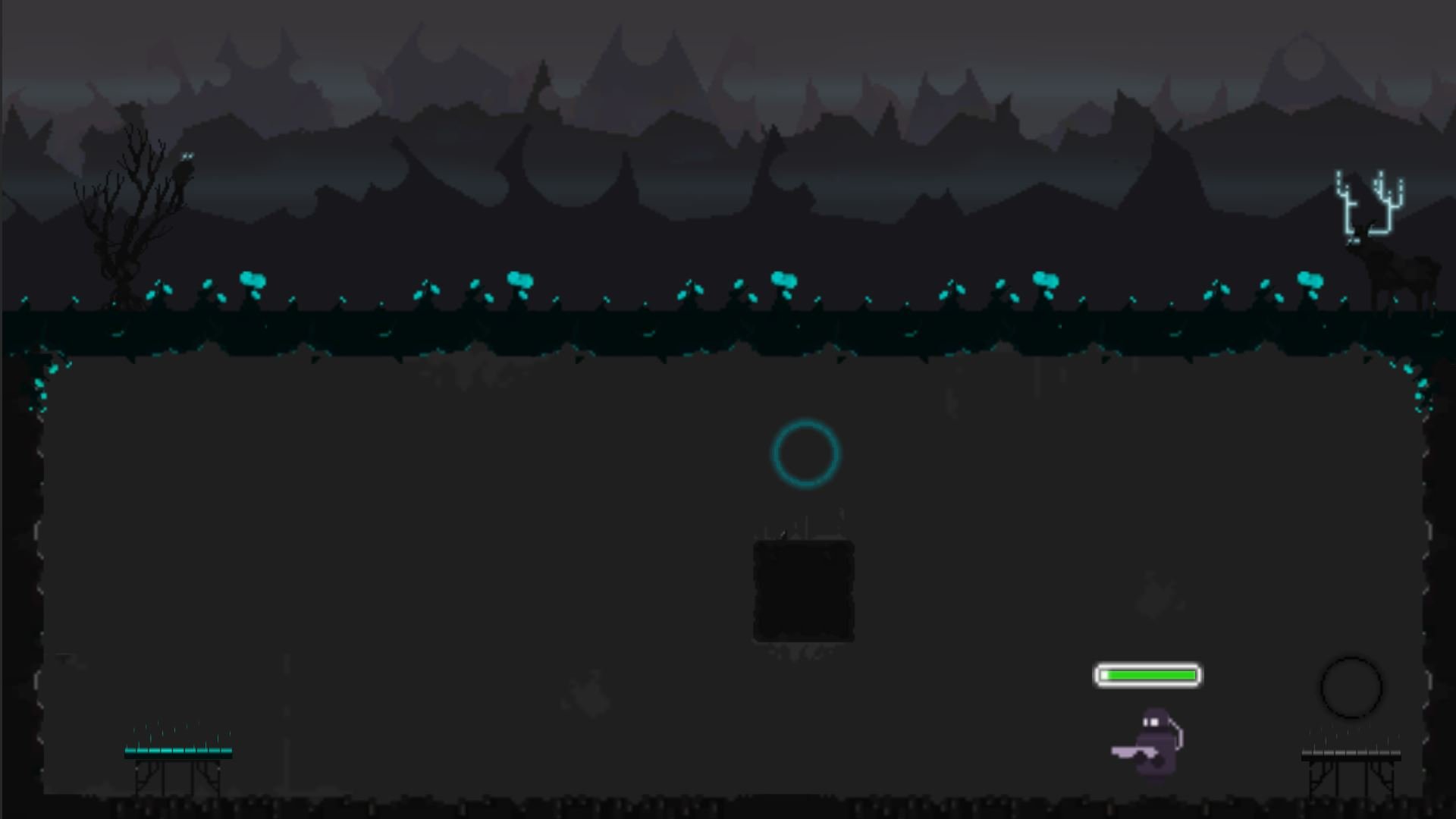// Neotron
A 2D Puzzle/Action game created in Unity alongside two classmates
Art & Animation by: @penusbmic
// Key Responsibilities
Role: Level Designer (Team of 3)
• Worked with programmers to design combat mechanics and four puzzles for a 2D Puzzle/Action game in Unity
• Created level layouts and combat scenarios based on a non-linear ability unlock system that upgraded the player’s speed, health and attack power
• Designed the level environments and established a unique aesthetic for each one using pre-existing assets and props
// Design Overview
As the level designer for Neotron my goal was to make each level seem like you’ve entered a new, yet familiar, world.
To accomplish this I decided to design each level based around a single color and use the emotions that are associated with it to reflect the layout of the environment. This was something that I wanted to be apparent to the player from the very start when they enter the game’s central hub.
// Maze Puzzle
The color green was chosen as the basis for this room since it’s related to “growth”. This is first reflected in the scene’s forest aesthetic where the entire layout has grown out from the roots of the central tree, creating a maze that the player must navigate through.
In traversing through the maze itself, the player is advancing in their mastery of the character’s movement and will be necessary when maneuvering around the final boss’ attack patterns.
// Intro Room
Being the first puzzle that the player encounters in the game, I themed this room around the color blue due to its association with calmness and peace.
This was important for me when piecing together the layout as I wanted to make the player feel like they aren’t in danger and can therefore take time to figure out the solution to the puzzle.
// Player Agency
Purple is known for feelings of “creativity” and “power”, thus being the inspiration behind this level’s layout. My approach to creating this level was to have players use their knowledge of how movement works in Neotron to give them the freedom to choose how they want to approach the enemies in Hotel 0-G.
Whether it be climbing to the top of the building to enter from the roof, sneaking underground to breach the first floor, or a combination of both, this level can be tackled however you choose.
// What Went Wrong
Neotron was one of the first Unity games I worked on during my time studying Game Development at Chapman. Since I was still learning the engine and the fundamentals of game design, I made mistakes that ultimately made me a better designer once I recognized and learned from them.
The first mistake I made was to overlook the importance of keeping the in-engine hierarchy organized, with each asset properly named and grouped together when necessary. This became a problem when it came time to fixing bugs in our game since my peers had trouble finding references to the various objects within a scene.
The other crucial error I made was when providing collision to assets. When adding collision to each asset I made them separate assets within the hierarchy without directly attaching them to their correlating art asset. This led to objects having inaccurate collision and double the number of assets than necessary per level.
// Post-Mortem
Working on Neotron proved to be an incredible learning experience for me since I was able to learn through the mistakes I made. Through this learning experience I discovered the value of organization when working in any game engine and also learned how to be more efficient when implementing art assets into a level.
If given the opportunity to do Neotron over I would like to have designed the puzzles in a way that made them more connected to each other. While it was challenging to achieve this within a game where the puzzles could be accessed in any order, I’d like to have challenged myself more in using the simplistic shooting and movement mechanics as the basis for each puzzle (rather than having a block pushing or secret code puzzle for example).



